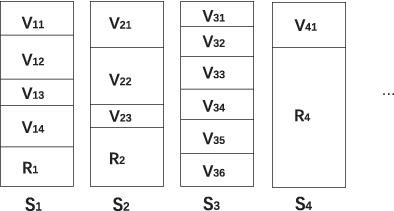当前位置:
X-MOL 学术
›
Trans. Emerg. Telecommun. Technol.
›
论文详情
Our official English website, www.x-mol.net, welcomes your feedback! (Note: you will need to create a separate account there.)
Defending co-resident attack using reputation-based virtual machine deployment policy in cloud computing
Transactions on Emerging Telecommunications Technologies ( IF 3.6 ) Pub Date : 2021-04-26 , DOI: 10.1002/ett.4271 Yiming Xiao 1 , Liang Liu 1 , Zuchao Ma 1 , Zijie Wang 1 , Weizhi Meng 2
Transactions on Emerging Telecommunications Technologies ( IF 3.6 ) Pub Date : 2021-04-26 , DOI: 10.1002/ett.4271 Yiming Xiao 1 , Liang Liu 1 , Zuchao Ma 1 , Zijie Wang 1 , Weizhi Meng 2
Affiliation

|
Cloud computing enables users to utilize IT resources conveniently with low-level cost, but it also brings some new threats. The co-resident attack is one of the typical examples, where malicious users steal information from legal users by starting a virtual machine (VM) and building a side-channel between VMs on the same server. Most of current studies focus mainly on defending the side-channel attack, which requires modifications to the existing underlying architecture of cloud platforms. Some studies focus on security-aware VMs deployment policies that can defeat co-resident attacks through reduction of co-residences. However, most of these studies ignore workload-balance and energy-efficiency. In addition, they neglect that data held in different VMs should have different security levels. Motivated by these issues, in this article, we first formalize the multi-attackers co-resident attack problem. The co-located VMs rate (CVR) metric is proposed to evaluate the security level in cloud and a security-aware policy named least-danger-based-on-reputation (LDBR) is presented to minimize the metric. Also, we propose extensional LDBR (E-LDBR) policy to balance security, workload-balance and energy consumption, and weighted-LDBR (W-LDBR) policy that considers users' different security levels. Experimental results indicate that LDBR outperforms PSSF (previous-selected-server-first) by 15.02%-22.07% in security, E-LDBR is more balanced in workload and consumes less energy consumption, and W-LDBR can reduce security threats by 13.3% compared with PSSF.
中文翻译:

在云计算中使用基于信誉的虚拟机部署策略防御共存攻击
云计算使用户能够以较低的成本方便地利用IT资源,但同时也带来了一些新的威胁。共存攻击是典型的例子之一,恶意用户通过启动虚拟机(VM)并在同一服务器上的虚拟机之间建立侧通道来窃取合法用户的信息。目前的大部分研究主要集中在防御侧信道攻击上,这需要对现有的云平台底层架构进行修改。一些研究侧重于安全感知 VM 部署策略,这些策略可以通过减少共驻来击败共驻攻击。然而,这些研究中的大多数都忽略了工作负载平衡和能源效率。此外,他们忽略了保存在不同 VM 中的数据应该具有不同的安全级别。受这些问题的启发,在本文中,我们首先将多攻击者共存攻击问题形式化。提出了共置虚拟机率 (CVR) 指标来评估云中的安全级别,并提出了一种名为最小危险基于信誉 (LDBR) 的安全意识策略来最小化该指标。此外,我们提出了平衡安全性、工作负载平衡和能耗的扩展 LDBR (E-LDBR) 策略,以及考虑用户不同安全级别的加权 LDBR (W-LDBR) 策略。实验结果表明,LDBR在安全性上优于PSSF(previous-selected-server-first)15.02%-22.07%,E-LDBR工作负载更均衡,能耗更低,W-LDBR可以减少13.3%的安全威胁与 PSSF 相比。提出了共置虚拟机率 (CVR) 指标来评估云中的安全级别,并提出了一种名为最小危险基于信誉 (LDBR) 的安全意识策略来最小化该指标。此外,我们提出了平衡安全性、工作负载平衡和能耗的扩展 LDBR (E-LDBR) 策略,以及考虑用户不同安全级别的加权 LDBR (W-LDBR) 策略。实验结果表明,LDBR在安全性上优于PSSF(previous-selected-server-first)15.02%-22.07%,E-LDBR工作负载更均衡,能耗更低,W-LDBR可以减少13.3%的安全威胁与 PSSF 相比。提出了共置虚拟机率 (CVR) 指标来评估云中的安全级别,并提出了一种名为最小危险基于信誉 (LDBR) 的安全意识策略来最小化该指标。此外,我们提出了平衡安全性、工作负载平衡和能耗的扩展 LDBR (E-LDBR) 策略,以及考虑用户不同安全级别的加权 LDBR (W-LDBR) 策略。实验结果表明,LDBR在安全性上优于PSSF(previous-selected-server-first)15.02%-22.07%,E-LDBR工作负载更均衡,能耗更低,W-LDBR可以减少13.3%的安全威胁与 PSSF 相比。工作负载平衡和能耗,以及考虑用户不同安全级别的加权LDBR(W-LDBR)策略。实验结果表明,LDBR在安全性上优于PSSF(previous-selected-server-first)15.02%-22.07%,E-LDBR工作负载更均衡,能耗更低,W-LDBR可以减少13.3%的安全威胁与 PSSF 相比。工作负载平衡和能耗,以及考虑用户不同安全级别的加权LDBR(W-LDBR)策略。实验结果表明,LDBR在安全性上优于PSSF(previous-selected-server-first)15.02%-22.07%,E-LDBR工作负载更均衡,能耗更低,W-LDBR可以减少13.3%的安全威胁与 PSSF 相比。
更新日期:2021-04-26
中文翻译:

在云计算中使用基于信誉的虚拟机部署策略防御共存攻击
云计算使用户能够以较低的成本方便地利用IT资源,但同时也带来了一些新的威胁。共存攻击是典型的例子之一,恶意用户通过启动虚拟机(VM)并在同一服务器上的虚拟机之间建立侧通道来窃取合法用户的信息。目前的大部分研究主要集中在防御侧信道攻击上,这需要对现有的云平台底层架构进行修改。一些研究侧重于安全感知 VM 部署策略,这些策略可以通过减少共驻来击败共驻攻击。然而,这些研究中的大多数都忽略了工作负载平衡和能源效率。此外,他们忽略了保存在不同 VM 中的数据应该具有不同的安全级别。受这些问题的启发,在本文中,我们首先将多攻击者共存攻击问题形式化。提出了共置虚拟机率 (CVR) 指标来评估云中的安全级别,并提出了一种名为最小危险基于信誉 (LDBR) 的安全意识策略来最小化该指标。此外,我们提出了平衡安全性、工作负载平衡和能耗的扩展 LDBR (E-LDBR) 策略,以及考虑用户不同安全级别的加权 LDBR (W-LDBR) 策略。实验结果表明,LDBR在安全性上优于PSSF(previous-selected-server-first)15.02%-22.07%,E-LDBR工作负载更均衡,能耗更低,W-LDBR可以减少13.3%的安全威胁与 PSSF 相比。提出了共置虚拟机率 (CVR) 指标来评估云中的安全级别,并提出了一种名为最小危险基于信誉 (LDBR) 的安全意识策略来最小化该指标。此外,我们提出了平衡安全性、工作负载平衡和能耗的扩展 LDBR (E-LDBR) 策略,以及考虑用户不同安全级别的加权 LDBR (W-LDBR) 策略。实验结果表明,LDBR在安全性上优于PSSF(previous-selected-server-first)15.02%-22.07%,E-LDBR工作负载更均衡,能耗更低,W-LDBR可以减少13.3%的安全威胁与 PSSF 相比。提出了共置虚拟机率 (CVR) 指标来评估云中的安全级别,并提出了一种名为最小危险基于信誉 (LDBR) 的安全意识策略来最小化该指标。此外,我们提出了平衡安全性、工作负载平衡和能耗的扩展 LDBR (E-LDBR) 策略,以及考虑用户不同安全级别的加权 LDBR (W-LDBR) 策略。实验结果表明,LDBR在安全性上优于PSSF(previous-selected-server-first)15.02%-22.07%,E-LDBR工作负载更均衡,能耗更低,W-LDBR可以减少13.3%的安全威胁与 PSSF 相比。工作负载平衡和能耗,以及考虑用户不同安全级别的加权LDBR(W-LDBR)策略。实验结果表明,LDBR在安全性上优于PSSF(previous-selected-server-first)15.02%-22.07%,E-LDBR工作负载更均衡,能耗更低,W-LDBR可以减少13.3%的安全威胁与 PSSF 相比。工作负载平衡和能耗,以及考虑用户不同安全级别的加权LDBR(W-LDBR)策略。实验结果表明,LDBR在安全性上优于PSSF(previous-selected-server-first)15.02%-22.07%,E-LDBR工作负载更均衡,能耗更低,W-LDBR可以减少13.3%的安全威胁与 PSSF 相比。



























 京公网安备 11010802027423号
京公网安备 11010802027423号